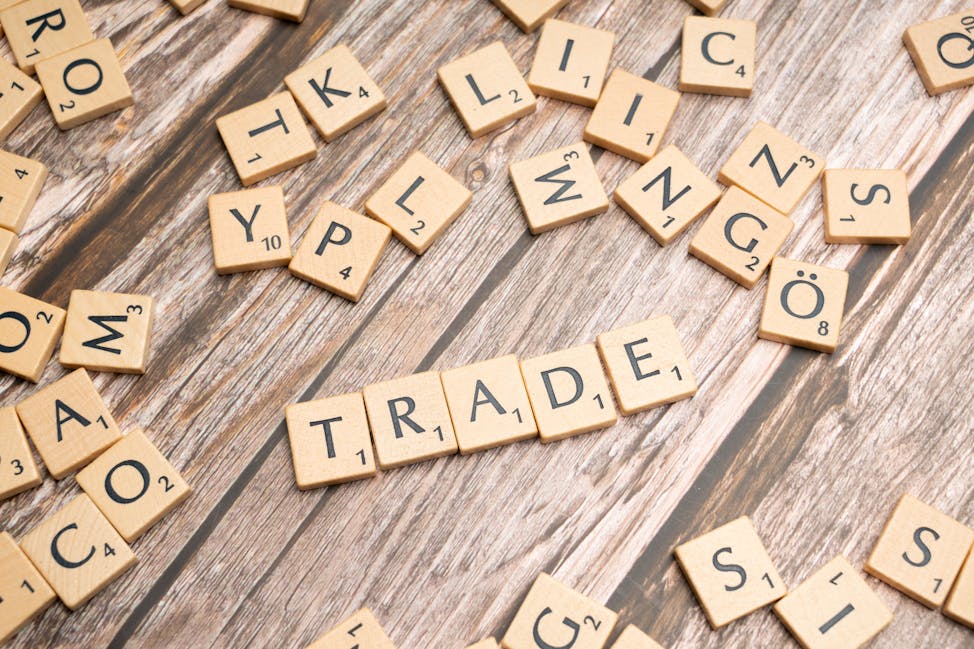In recent months, President Trump has hinted at a sweeping and aggressive new tariff strategy, reviving a familiar playbook from his first term. Framed as a way to reduce the trade deficit, boost domestic manufacturing, and tighten border security, Trump’s tariff plan could have far-reaching consequences across nearly every sector of the U.S. economy.
On April 2—what Trump has dubbed “Liberation Day”—the White House formally announced the details of the plan, introducing a broad set of tariffs that many economists believe could disrupt global markets. While the administration argues these measures are necessary to correct trade imbalances and protect American jobs, critics warn of rising costs for businesses and consumers alike.
Whether this move signals a larger strategic vision or is primarily a high-stakes negotiation tactic remains to be seen. But as the policy continues to take shape, it’s essential to understand what tariffs are, how they function, and the potential ripple effects they may create throughout the economy.
WHAT ARE TARIFFS?
Tariffs are taxes governments impose on imported goods. Their primary purpose is to make foreign products more expensive, thereby encouraging consumers to buy domestically produced alternatives. Tariffs can also be used as leverage in trade negotiations or to penalize countries for certain policies.
There are two main types of tariffs:
- Ad valorem tariffs, calculated as a percentage of the product’s value (e.g., 25% of the product’s price).
- Specific tariffs, which are fixed fees based on quantity (e.g., $50 per ton of steel).
Governments may use tariffs to protect strategic industries, reduce reliance on foreign suppliers, or respond to unfair trade practices. However, they often spark retaliation from trading partners and can drive up costs for consumers and businesses at home.
HOW DO TARIFFS WORK?
When a tariff is enacted, it raises the cost of the affected imported goods. For example, if a U.S. importer brings in a $10,000 vehicle and faces a 25% tariff, the importer now pays an additional $2,500 in taxes. That cost is typically passed on to consumers in the form of higher prices.
Tariffs can benefit domestic producers by making their products relatively more affordable compared to imports. But they can also disrupt supply chains, particularly in industries that rely on global sourcing of parts and materials. Over time, tariffs can dampen competition, hinder innovation, and slow economic growth.
TRUMP’S TARIFF PLAN: A BREAKDOWN
On April 2, President Trump announced a sweeping set of new import tariffs—ranging from 10% to 49%—targeting 185 countries. Here’s a broad timeline of Trump’s tariff plan and where it stands as of Liberation Day:
10% BASELINE TARIFF
As part of the Liberation Day tariff plan, President Trump has announced a 10% baseline tariff on all imports to the United States, set to take effect on April 5. U.S. companies that import goods will be responsible for paying this tax to the federal government.
Notably, Mexico and Canada are exempt from the new 10% baseline tariff, as they were already targeted under earlier phases of the Trump administration’s trade strategy. However, both countries remain subject to previously imposed tariffs of 25%.
RECIPRICOL TARIFFS
In addition to the baseline tariff, Trump’s tariff plan includes a set of targeted reciprocal tariffs aimed at what the administration calls the “worst offenders.” These country-specific tariffs are scheduled to take effect on April 9.
According to White House officials, these nations either impose significantly higher tariffs on U.S. goods, maintain restrictive non-tariff trade barriers, or otherwise engage in practices seen as undermining American economic interests.
Key trading partners facing these elevated, customized tariffs include:
- China – 54% (includes previous tariffs)
- European Union – 20%
- Vietnam – 46%
- India – 26%
- Cambodia – 49%
- South Africa – 30%
- Taiwan – 32%
CANADA AND MEXICO
On March 4, a 25% import tariff took effect on most goods from Canada and Mexico, with a reduced 10% rate applied to energy products and potash. However, the Trump administration quickly suspended tariffs on automobiles and other items eligible for duty-free treatment under the U.S.-Mexico-Canada Agreement (USMCA).
On April 2, the White House reaffirmed this position, stating that 25% tariffs would continue to apply to non-USMCA-compliant goods, while products that qualify for duty-free status under the agreement would remain exempt.
In response, Canada imposed retaliatory tariffs on $21 billion worth of U.S. goods—including produce, household appliances, and liquor—and announced plans for an additional $20.6 billion in response to earlier U.S. steel and aluminum tariffs. Mexico, for now, has chosen not to retaliate.
AUTOMOTIVE IMPORTS
Starting April 3, a sweeping 25% tariff on all automotive imports—including both finished vehicles and parts—is set to take effect. Parts that meet USMCA content requirements will remain exempt for now, although the Commerce Department is working on a framework to address components sourced from outside the U.S.
The impact on car prices could be significant—even for American automakers. According to data from Visual Capitalist, between 25% and 33% of vehicles sold in 2024 by the Big Three U.S. manufacturers were assembled in Mexico or Canada, meaning many of those models could soon carry a much higher price tag.
STEEL AND ALUMINUM
On March 12, the Trump administration imposed a blanket 25% tariff on all imported steel and aluminum, reigniting tensions with key trading partners.
The European Union swiftly retaliated with a 50% tariff on American whiskey, motorcycles, and motorboats starting April 1, with additional levies planned for a broad range of agricultural and consumer goods. Canada also hit back, enacting $20.6 billion in new tariffs on U.S. imports.
In response to the mounting backlash, Trump threatened to escalate further by floating a 200% tariff on alcohol imported from the EU.
TRUMP’S TARIFF PLAN AND CHINA
The latest round of U.S.-China trade tensions began on February 4, when the White House imposed an additional 10% tariff on Chinese imports, adding to the array of existing levies. China hit back with tariffs targeting U.S. coal, liquefied natural gas, crude oil, and agricultural machinery.
The standoff escalated further in March, as Trump raised tariffs on Chinese goods by another 10%. In response, China imposed steeper tariffs on a wide range of American exports—including poultry, soybeans, dairy, and cotton—and sanctioned 15 U.S. companies by restricting exports to them, signaling a more aggressive posture in the growing trade dispute.
On April 2, President Trump announced an additional 34% tariff on Chinese imports, raising China’s total tariff rate to 54%. China’s Ministry of Commerce called on the United States to “immediately cancel” its unilateral tariff measures and pledged to take “resolute counter-measures” to defend its economic interests.
OTHER TARGETED SECTORS IN TRUMP’S TARIFF PLAN
In addition to country-specific measures, Trump’s tariff plan includes several industry-specific tariffs aimed at strategic sectors:
- Venezuelan Oil. As of April 2, countries that purchase oil or gas from Venezuela will face a 25% tariff on their exports to the U.S.
- Copper and Lumber. The White House is considering an extra 25% tariff on imported copper and lumber.
- High-Tech and Pharmaceuticals. The administration is weighing tariffs of 25% or more on semiconductors and pharmaceutical products.
POTENTIAL ECONOMIC IMPACT OF TRUMP’S TARIFF PLAN
President Trump’s tariff plan carries far-reaching implications for consumers, businesses, and the broader U.S. economy. While the goal is to protect domestic industries and rebalance trade relationships, the potential consequences are complex—and in many cases, uncertain. Key areas of concern include:
RISING COSTS FOR CONSUMERS
Tariffs often result in higher prices for imported goods—and even for domestically produced alternatives—as businesses pass increased input costs along to consumers. According to economist Art Laffer, the proposed auto tariffs alone could raise the price of a new vehicle by an average of $4,711, putting added pressure on household budgets and contributing to inflation.
PRESSURE ON U.S. MANUFACTURERS
While tariffs are designed to protect American industries, they can also drive up production costs for companies that depend on imported parts and materials. This could result in reduced competitiveness, shrinking profit margins, and the risk of widespread job losses. In fact, the Tax Foundation estimates that the proposed tariffs could shrink U.S. GDP by 0.4% and eliminate the equivalent of 309,000 full-time jobs—even before accounting for retaliatory tariffs.
U.S. automaker Stellantis, for example, has announced a pause in production at two assembly plants in Canada and Mexico as it works to navigate the newly imposed 25% automotive tariffs. This move affects roughly 900 U.S.-represented employees at supporting plants, as well as about 4,500 hourly workers at the company’s Canadian plant.
Major tech companies are also under pressure. Firms that import components from countries like China, Taiwan, and South Korea are bracing for the financial hit from higher tariffs on electronic parts. Apple—heavily reliant on manufacturing operations in China and India—saw its stock tumble 8.6% in the wake of the Liberation Day announcement.
RETALIATION FROM TRADING PARTNERS
Tariffs often provoke retaliation—and earlier responses from Canada, China, and the EU suggest that America’s trading partners won’t sit idle. Retaliatory tariffs can limit access to key export markets, leading to lost revenue, layoffs, and regional economic setbacks.
Retaliation can also target politically sensitive industries, such as agriculture, manufacturing, and energy. Additionally, prolonged trade disputes can strain diplomatic relationships, hinder future trade negotiations, and weaken global supply chains, all of which compound the long-term economic uncertainty facing U.S. businesses.
INCREASED RISK OF RECESSION AND STOCK MARKET VOLATILITY
Economists are warning that President Trump’s sweeping tariff plan could heighten the risk of a U.S. recession. Higher import taxes are likely to drive up costs for businesses and consumers alike, potentially slowing business investment and triggering a pullback in household spending as Americans brace for price increases and broader economic uncertainty.
The lack of clarity around future tariff moves is further fueling unease among investors, adding another layer of unpredictability to an already fragile economic outlook.
While the Trump administration hasn’t ruled out the possibility of a recession, the president has downplayed the risk, calling a “little disturbance” potentially necessary to revive domestic manufacturing and restore high-paying industrial jobs. As markets adjust to this evolving policy landscape, investors should prepare for heightened volatility in the months ahead.
WHAT TRUMP’S TARIFF PLAN COULD MEAN FOR YOUR FINANCIAL FUTURE
President Trump’s sweeping new tariff plan represents one of the most expansive protectionist moves in recent U.S. history. Aimed at overhauling global trade relationships, these measures could have far-reaching effects—impacting everything from consumer prices and manufacturing costs to international diplomacy.
While some industries may benefit from greater protection, the broader economic risks are hard to ignore. Rising inflation, disrupted supply chains, and retaliatory tariffs from global trading partners could lead to increased market volatility and uncertainty for consumers and investors alike.
In moments like these, having a thoughtful, long-term financial plan is key. A personalized strategy can help you stay grounded, focused, and resilient—no matter what headlines dominate the news cycle.
If you’re unsure whether your current plan can withstand these kinds of global economic shifts, now is a great time to reevaluate. And if you don’t have a plan yet, Sloan Advisory Group is here to help you create one. Contact us today to start building a strategy that’s designed to weather uncertainty and keep you on track toward your goals.







